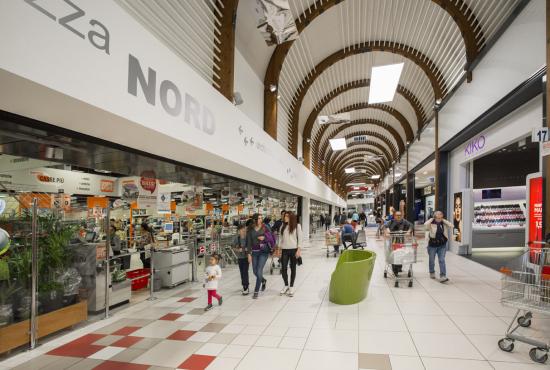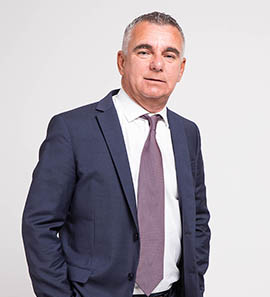The agreement with Coop Alleanza 3.0: a win-win deal that is key to the Business Plan

The presence of a food anchor is a unique feature that characterizes IGD’s shopping centers. The strategic agreement signed with Coop Alleanza 3.0 ensures the presence of what is IGD’s most important tenant in its centers at new conditions, more sustainable for the tenant and more visible for the lessor, which will remain unchanged for the next 18 years. The framework agreement covers 18 out of the 20 hypermarkets included in the portfolio, with a total market value of €520 million, and in five instances also calls for the remodeling of the area occupied which will create new opportunities to increase the centers’ appeal.
We learned more about the objectives and repercussions of this complete revision of the leases from Daniele Cabuli, IGD’s Chief Operating Officer who was actively involved in defining the agreement.
What is the thought process that led to this agreement?
The idea to revise and extend the leases was based on an analysis of the sales in our shopping centers which indicated that the hypermarkets were not performing in the same way as the stores in the malls. The food anchor is still and will continue to be an integral part of our shopping center concept, also because 7 out of 10 people enter the center to shop at the hypermarket; these shoppers, evenly distributed throughout the week, generate traffic which also benefits the stores in the mall. While the food anchor remains a key attractor, on the one hand the changing consumer trends call for the presence of more personal services inside the center and, on the other, indicate that visitors are looking, more and more, for a shopping experience. In addition to these changes, the role of e-commerce is increasing which, while the penetration is still much lower in Italy compared to the United Kingdom and other European countries, makes it necessary to rethink the offer and size of the hypermarket.
What are the objectives underlying this new framework agreement?
The primary objective is sustainable long-term growth which led us to revise the current rents which, in some instances, resulted in unbalanced cost/occupancy ratios. By formalizing revenue streams for the next 18 years, we have already achieved our goal of full occupancy which means we can work with increased tranquility. Secondly, with respect to the five properties that will be remodeled, we were guided by the desire to make a concrete contribution to the relaunch of the hypermarket format, in terms of both size and a new, smaller configuration. The relaunch of the format will begin by reducing non-food merchandise – particularly relating to the sectors in which the specialized mall stores represent highly competitive options – to focus more on the grocery and fresh food segments. Lastly we were guided, as always, by the desire to increase the appeal of the shopping center overall.
How will the space made available as result of the downsizing of the five hypermarkets be used?
We will have space available which can be used, for example, for the inclusion of a new piazza dedicated to leisure time activities and entertainment or to create midsize stores which can enhance a center’s offering, something we have proven we know how to do at Afragola and in Ascoli Piceno where improvements of this sort were very successful in terms of both higher footfalls and sales.
What about the third objective of this agreement, what can you do to increase a center’s appeal overall?
Relaunching a single vision which allows for more effective management. The marketing policies in a single center sometimes are not well coordinated: an effective integration will certainly increase the impact and efficiency of the work done.
What are the key elements found in the framework agreement?
The most important element is the extension of the lease’s duration to 18 years: the tenant cannot terminate the lease until 2037. Secondly, in several instances, the agreement allows for the hypermarket rents to be recalculated based on rents per square meter that are sustainable in this new environment. Thirdly, the downsizing of five hypermarkets. The space that is created will be transferred to IGD in order to increase the offering inside the mall. A significant part of the revenue stream that will be lost as a result of the downsizing of the hypermarket will be offset by the new activities of the new tenants. If, on the one hand, the total GLA of the hypermarkets will drop by 21,500 m2, on the other hand, we believe that we will be able to create around 18,600 m2 in new, leasable GLA; in terms of rental income, therefore, we expect to see a negative, but limited impact, of about €1.9 million. The most important aspect however, in our opinion, is the ability to maintain the property’s overall market value: toward this end, we expect to see a balanced ERV – Estimated Rental Value – which, alternatively, would have dropped.
What was the opinion of the Committee for Related Party Transactions?
The Committee, which is one of IGD’s Board committees, issued a positive opinion of the transaction and that it was, overall, in the Company’s best interest given the longer duration of the leases, the balance of the ERV, and the increased sustainability of the revenues for tenants. The Committee also appreciated the fact that at the end of the Plan, the asset class hypermarket is expected to drop as a percentage of total revenues from the current 27% to around 21-22%.
When will you begin to market the leasable space that will become available as a result of the downsizing of the five hypermarkets?
We will begin offering these spaces already at MAPIC, the European real estate sector’s biggest trade fair which will be held in Cannes on 14 November, in order to jumpstart pre-marketing as much as possible.
We thank you for sharing these insights with us.
Buon lavoro.
Share




